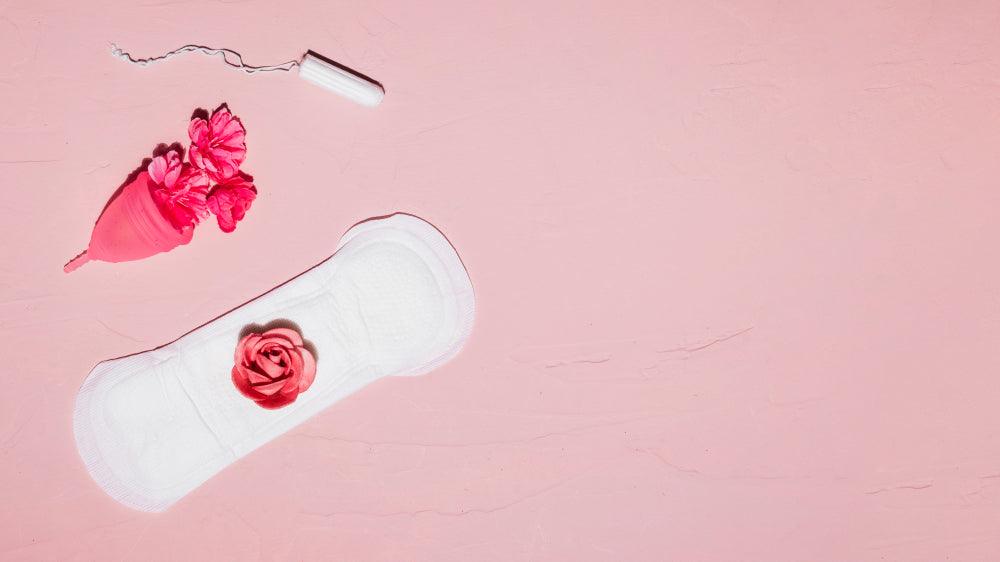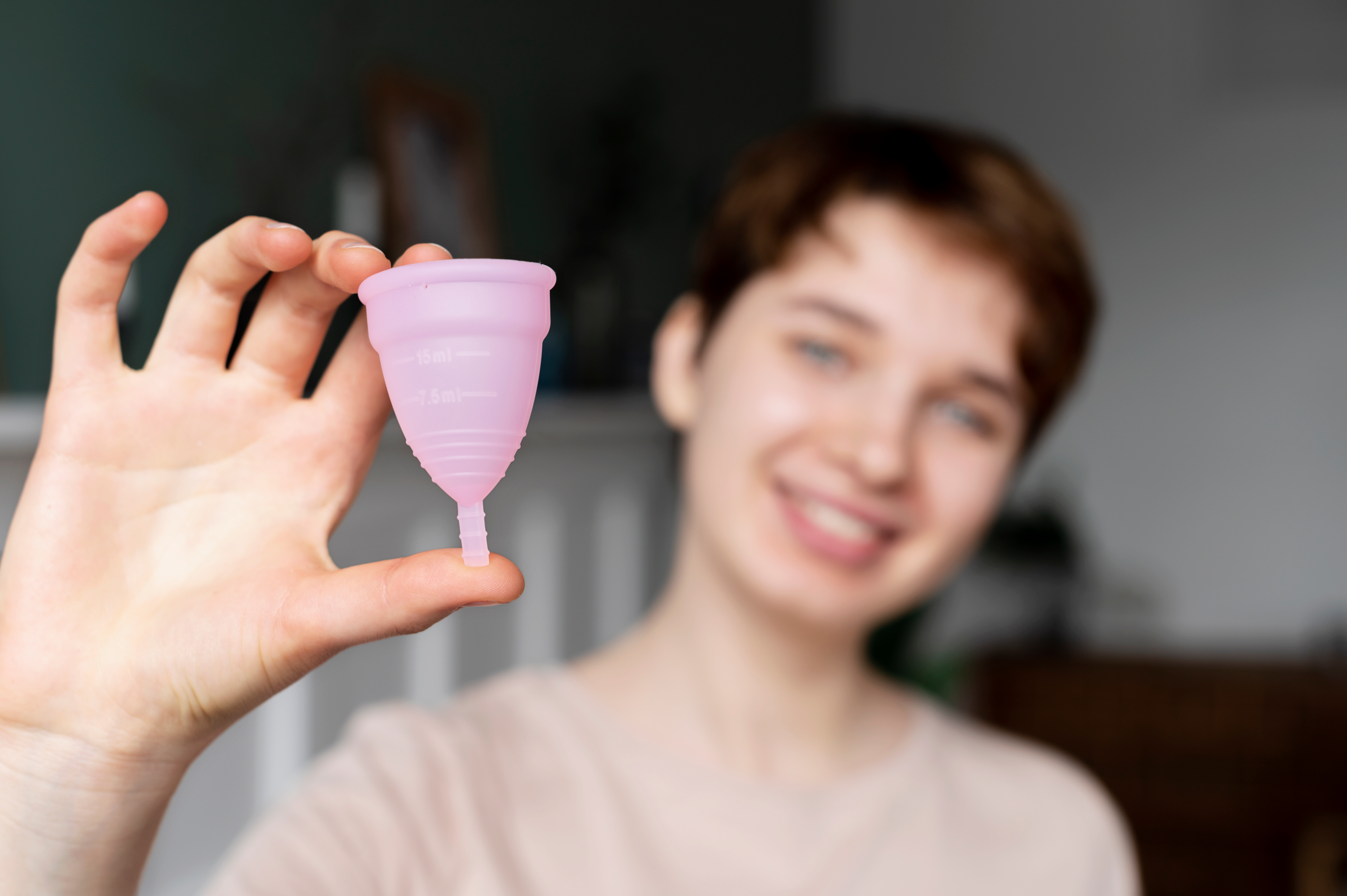What is a Period Cup?


A period cup or Menstrual cup is a small funnel-shaped female hygiene product that is used on days of menstruation. It is made of soft silicone or elastic material that won't damage or irritate the vaginal inner lining. Many women prefer using menstrual cups as compared to other menstruation sanitary products that usually result in infections or allergic reactions.
Period cups can hold a greater amount of menstrual blood since there is no absorption or absorption limit of menstrual blood involved in this product. Menstrual blood is collected in the cup and can be evacuated after every 12 hours, washed, and worn again. A menstrual cup can be used over and over again after washing, unlike pads and tampons that are not reusable.

Menstrual cups are hectic-free for your heavy flow. Once you learn how to use it, it will mark a full stop to your constant worry of blood leakage.
You need to follow the following steps for inserting a menstrual cup:
Wash your hands thoroughly with soap.
Unpack the menstrual cup and rinse it with warm tap water.
Now fold the rim of the cup in C-shape and gently insert it into the vagina. As the rim is slightly inserted, direct your cup gently toward the tailbone instead of going straight up.
Once the menstrual cup reaches the accurate or safe position, it will open up and create a seal with your vaginal walls to prevent blood leakage.
Make sure that the cup placement is accurate with a gentle rotation of the cup inside your vagina. If there is slight resistance then it's a sign of correct placement and a seal has been formed with the vaginal walls.
Now wash your hands again and go about your day. Carefree for 12 hours!
Once you know how to use a menstrual cup, you can stay confident throughout your day. It won't fall out while doing anything.
Now that 12 hours have gone by, we advise you to remove the cup for better hygiene. Follow the steps below:
Wash your hands thoroughly.
With the help of your thumb and index finger, pull the cup gently by its stem downwards.
Once the cup is in motion, fold the base of the cup to make way and release air. Gently remove the cup now.
Wash away the cup in the toilet or sink. You need to wash the cup fully clean to use it again. This step should never be compromised.
If you are not going to reuse the cup right after, airdry the cup and keep it safe and clean in a packet until next time!
Period cups are available in small and large sizes. You can choose any of them according to your comfort or bleeding. Ideally, small-size cups are for women below 30 years of age whereas large-size cups are for women above 30 years of age. If you recently gave birth to your baby, despite your age you are free to use large cups for postpartum heavy bleeding.
If you choose to wear the best menstrual cup, do try all kinds and brands to find the one that is most suited for you. All of these medical-grade silicone cups are of the same shape but slight changes may help you prioritize one over the others. Out of so many cups, some of the reusable best menstrual cups that you need to try are mentioned below.
Diva Cup
Lily Cup
Moon Cup
Yuuki Cup
Lena Cup
Lunette Cup
Read further in this article to understand the advantages and disadvantages of using a menstrual cup.
1. Cost Effective: Once bought. period cups can be used for a long time as compared to the other means. They are reusable after every wash. On the contrary, other female sanitation products such as pads and tampons are discarded after one use and will cost more than a menstrual cup.
2. Eco-Friendly: A reusable menstrual cup has a large role in a healthier ecosystem. Menstrual cups are eco-friendly since they can be used and reused for 6 months or a year if proper care is taken.
3. Odourless: Period cups are not smelly, neither good nor bad. After a certain period, pads and tampons cause a foul smell which can cause discomfort.
4. Integrated Scale: You can monitor your bleeding with the help of a menstrual cup. An integrated scale on a menstrual cup can help you record your bleeding in millilitres (ml) after every 12 hours. Pads and tampons have absorbent material in them which is difficult to monitor menstrual bleeding.
5. Low risk of infection: Tampons may cause a severe bacterial infection called Toxic Shock Syndrome(TSS) in females. Similarly, fragrant chemicals in sanitary pads can damage your vulva. Menstrual cups, on the other hand, contain no such additives and hence possess the least risk of infections in comparison to other means.

This section will help you decide on choosing period cups while keeping their advantages in mind.
1. Menstrual cups are messy: Most menstrual cups use can be messy at times since the blood can spill around while you are removing the cup. You might find it hard or awkward to remove your menstrual cup in certain places.
2. First Period: You might want to use pads or other sanitary products if it is your first period. Getting used to a menstrual cup or a tampon might take some time for some people.
3. Fitting: It's hard or frustrating at times to fit the cup. If it does not fit properly, the cup is likely to leak.
4. Local Irritation: Some menstrual cup users complain of local pain and irritation while sitting in certain positions. If you face the same issue, it is better to switch away from menstrual cups for your own comfort.
For further information on women's menstration or sanitary products, visit the Welzo Women's Health Hub.










Plus get the inside scoop on our latest content and updates in our monthly newsletter.